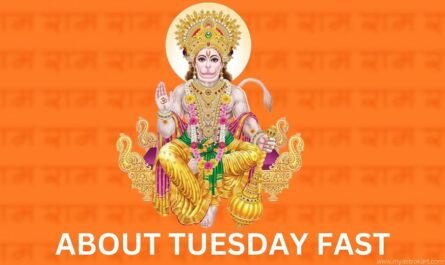In Hinduism, the lunar cycle is an important aspect of many religious and cultural practices. The moon is divided into two halves, known as Pakshas, with each Paksha lasting approximately 15 days. Shukla Paksha and Krishna Paksha are the two halves of the lunar cycle and have significant differences in their spiritual significance and practices. In this article, we will explore the differences between Shukla Paksha and Krishna Paksha.
What is Shukla Paksha?
Shukla Paksha is the waxing phase of the moon, which starts from the new moon day or Amavasya and lasts for 15 days. This phase is also known as the bright half of the lunar cycle. The moon appears to grow larger every day during this phase, and it culminates with the full moon day or Purnima.
Spiritual Significance of Shukla Paksha:
Shukla Paksha is considered to be a time of growth, prosperity, and new beginnings. The waxing moon is associated with positive energy, and it is believed that any good deeds performed during this phase will bring fruitful results. Shukla Paksha is also considered to be an auspicious time for starting new projects, making important decisions, and performing religious ceremonies.
Practices During Shukla Paksha:
There are several practices that are associated with Shukla Paksha. Some of these include:
- Fasting: Many people observe fasts during Shukla Paksha, particularly on days like Ekadashi and Purnima.
- Worship: It is common to perform puja and offer prayers to deities during this phase.
- Charity: Giving alms or making donations to the needy is considered to be a virtuous act during this phase.
Starting New Ventures: As mentioned earlier, Shukla Paksha is an auspicious time for starting new projects, businesses, or investments.
What is Krishna Paksha?
Krishna Paksha is the waning phase of the moon, which begins on the full moon day or Purnima and lasts for 15 days. This phase is also known as the dark half of the lunar cycle. The moon appears to grow smaller every day during this phase, and it culminates with the new moon day or Amavasya.
Spiritual Significance of Krishna Paksha:
Krishna Paksha is considered to be a time of introspection, reflection, and letting go. The waning moon is associated with negative energy, and it is believed that any bad deeds performed during this phase will bring negative consequences. Krishna Paksha is also considered to be an auspicious time for spiritual practices like meditation, yoga, and self-reflection.
Practices During Krishna Paksha:
There are several practices that are associated with Krishna Paksha. Some of these include:
- Fasting: Similar to Shukla Paksha, many people observe fasts during Krishna Paksha, particularly on days like Ekadashi and Amavasya.
- Worship: It is common to perform puja and offer prayers to deities during this phase as well.
- Charity: Giving alms or making donations to the needy is considered to be a virtuous act during this phase as well.
- Letting Go: Krishna Paksha is considered to be a good time to let go of negativity, bad habits, and negative thoughts. This phase is believed to help in spiritual growth and self-improvement.
Difference Between Shukla Paksha and Krishna Paksha:
The main difference between Shukla Paksha and Krishna Paksha is their spiritual significance and practices. Shukla Paksha is associated with growth, prosperity, and new beginnings, while Krishna Paksha is associated with introspection, reflection, and letting go. The waxing moon of Shukla Paksha is associated with positive energy, while the waning moon of Krishna Paksha is associated with negative energy.
Shukla Paksha Rituals and Celebrations
Ekadashi Vrat
The eleventh day of both the Shukla and Krishna Paksha is considered auspicious for fasting and observing spiritual disciplines. The Ekadashi Vrat during Shukla Paksha holds special significance, and devotees abstain from food and engage in prayer, meditation, and acts of charity.
Navratri
The nine-night festival of Navratri, celebrated twice a year, falls within Shukla Paksha. Devotees honor the divine feminine energy by performing special rituals, dances (Garba and Dandiya), and prayers dedicated to various forms of Goddess Durga.
Other Festivals
Festivals like Ram Navami, Akshaya Tritiya, and Hanuman Jayanti often occur during Shukla Paksha, emphasizing its association with auspicious celebrations.
Shukla Paksha And Krishna Paksha Calendar 2023
Knowing the exact dates of Krishna Paksha 2023 and Shukla paksha 2023 can be beneficial to know the auspicious and non-favourable days of the month.
Note down the following dates for your 2023 astrological calendar!
| Month | krishna | Shukla |
| june | 4 june – purnima on 4 june 19 june – 3 july | 5-15 june – amavasya 18 june |
| july | 3 july purnima , 18-1 auagest shukla | 4-17 july shukla , 17 june amavasya |
| august | 1 august purnima, 17-31 august purnima | 2 August to 16 august krishna |
| september | 16-29 Krishna paksha | 1-14 sept krishna – 14-15 sept amavasya |
| october | 15oct -28 ocot | 30 sept – 14 october shukla |
| november | 13 nov -27 nov | 29 ocot – 13 nov |
| december | 13 dec -26 dec shukla | 28 nov – 12 dec krishna paksha |
| january | 27 dec – 11 january krishna | 12 janaury 2024 – 25 jaunary shukla |
In conclusion, the difference between Shukla Paksha and Krishna Paksha lies in their spiritual significance, practices, and the energy associated with them. Both phases of the moon have their own unique qualities and are important in Hindu culture and traditions. By understanding the differences between the two phases, we can better appreciate the significance of the lunar cycle and its role in our spiritual lives.




